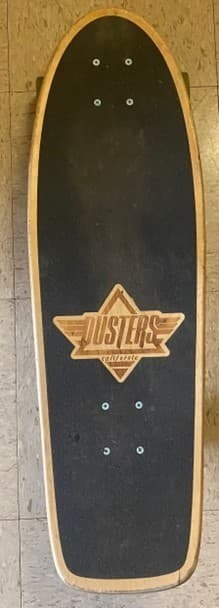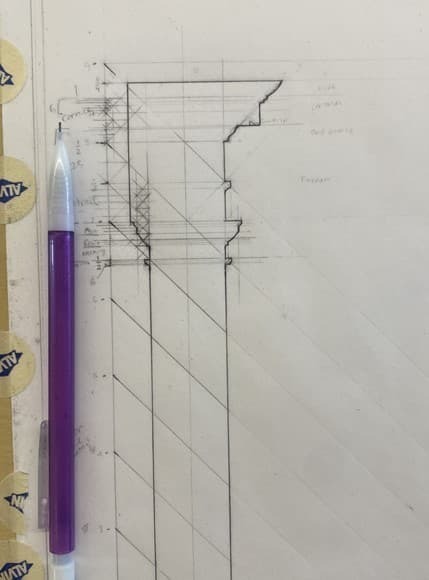Preface
Life is strange in so far as one moment we can feel comfortable with our surroundings or in what we’re experiencing. There are moments we can feel like we’re at the top of a mountain and then shortly thereafter feel like we’ve been pushed off the side because something is introduced that makes us uncomfortable. While some people do a better job at keeping their anxiety hidden, others struggle visibly. There are also people who thrive from the challenges that come with discomfort. There are a range of factors that influence every person’s reaction to discomfort. Some of the factors may include the degree of discomfort something makes a person feel, what makes a person feel uncomfortable, and past experiences a person has had related to a source of discomfort. If someone were leery of the introduction of new things, for example, that person may have faced something difficult in their past that caused them to be uncomfortable and therefore more risk averse. On the other hand, some people are able to cope well enough with newness and experience growth and enjoyment with few-to-no hiccups. Of course, some instances of newness—such as living in a dorm room, in a new city, with a stranger for the first time—may be easier for those who are less leery of newness, even those who crave new experiences may be stretched to their limit during their first semester in college. In the context of the following photo essay, newness will be closely associated with discomfort because that is the dominant theme of my college transition.
During my time in high school, I was typically welcoming of discomfort and could handle it well—even in challenging circumstances. However, I’ve found that since starting college, I’ve become less welcoming of discomfort. Actually, this is sort of untrue; there are times when I sway between welcoming and rejecting discomfort, but for the most part, I prefer to keep things as close to comfortable as possible. This is not because I’m some holed-up-hermit who hides in her shell when things don’t go according to my plan, but because it’s just easier to deal with the inevitable contingencies of life when one has some idea of what to expect. Don’t get me wrong, there are definitely times when unexpected things have happened that went amazingly well—these are the times when I’m more accepting of newness—it’s just the fear of something going horribly wrong, for whatever reason, that makes me hesitant to accept the introduction of new experiences, things, and people. As someone who oscillates between welcoming and fearing newness, I’ve found that there are habits of mind that make newness easier to navigate, including having some reliable comfort items to help keep one grounded, trying new things with an open mind, and doing things with one’s full effort—even in the face of an uncertain outcome.

This soft and well-loved comfort object is a blanket that I’ve had since I was born. I was born two months premature, so nothing was ready for me when my mother birthed me—not even a name. When my sister was born, however, my grandma had gotten two blankets for her, so when I arrived, one of the blankets became mine. When I returned home for my first visit during college, I made sure to bring my beloved baby blanket back with me. I originally left it behind because I didn’t think I needed it and didn’t want to risk losing it, but I’ve used it for so long that I can’t sleep comfortably without feeling its softness and weight on me. In life, we sometimes become attached to comfort objects without realizing how much we rely on them and it can be scary or strange to exist without them. Perhaps one day my blanket will be so threadbare and I’ll need to acquire a new transitional object to comfort me.

When one first learns new things, she may be uncomfortable doing them alone until she’s able to master the task. When I first started learning to skate, on a skateboard my older sister gave me, I was so anxious about messing up in front of people that I only did it at night. I waited until 3:00 AM on Fridays and Saturdays to skate in an empty parking lot by my dorm because I knew there would be few witnesses if I fell. Eventually, I looked forward to these 3:00 AM skates as I got better, and I finally grew comfortable enough to skate in public and commute around campus. During one of the last times I skated in public, I was going to pick up a coffee. When I was almost at the coffee shop, I wiped out in front of many people. My body hit the concrete with such force that my earbuds flew out. Since the accident, I’ve only skated in public once. I’m so anxious about wiping out again that I no longer practice in the parking lot at 3:00 AM. Bad experiences can inhibit a person from developing new skills and confidence, which can diminish our lives and make us risk averse.

The whole premise of Green Eggs and Ham by Dr. Seuss is that getting out of one’s comfort zone can give rise to new discoveries and joys. Trying new things can be a source of discomfort for some and this is definitely true for me—even when it comes to trying something as minor as a new food. While I was up exercising late one night, I got a sudden craving for a smoothie like I used to make at home. When I woke up, I decided to try an acai berry smoothie from a vendor on campus. The smoothie was life changing in the sense that I enjoyed it tremendously and it has become my go-to treat each week. In this photo, viewers see the red lines of the straw and one’s eyes are naturally drawn to the bottom of the cup. Like the lines of the straw that pull our attention forward, the smoothie calls to me like a siren song each week. While I’m usually uncomfortable with new foods, this experience is a small reminder of the what if possibilities in relation to new cuisine. What if I do like it? What if it’s my new favorite thing? The possibility of a positive outcome is why some people are willing to try new things, rather than assuming new things won’t measure up to our expectations.

During spring break, my friend visited me in Chicago for a day. I had recently become acquainted with Gabi and had a general understanding of her as a person and friend, but I had never hung out with her alone before, so I was unsure about how we would get along all day. When making new friends, I find that there are sometimes uncomfortable pauses in conversation when a topic of discussion comes to an end, and we scramble to find a new topic to talk about before the pause gets too awkward. I’m not sure if it was my familiarity with Chicago that helped me avoid this awkward discomfort at times, but I have no memorable moments of uncomfortable silence that I can conjure from this day with my new friend. At junctures like this one it’s preferable to be comfortable with the potential for feeling awkward—especially when there is a variable we’re comfortable with that can help us through the discomfort, such as knowing one’s way around her hometown. I took the risk of discomfort with the goal of potentially deepening a new friendship, through a shared experience, and it made me feel more confident and alive.

This is an image of an assignment I was given in my graphics class. During the beginning of the school year, I often felt like I didn’t belong in the School of Architecture—not because anyone made me feel unwelcome, but because I felt like I was not good enough to study among my talented and accomplished peers. As such, I felt uncomfortable going to and being in the studio for the better part of the first semester, but things started to get easier as I made friends in the program and realized that everyone struggled as much as I did with imposter syndrome. During the course of this assignment, everyone in my year grew increasingly frustrated as we progressed in the drafting process of the Tuscan order because the lines we had to calculate became unbearably small. My cohort and I bonded through our mutual dislike of the tedium of the assignment. While I originally found myself uncomfortable in the studio, I was able to grow more comfortable over time as I pushed through the discomfort, cultivated relationships with my peers, and earned unanticipated recognition for my work in my graphics class.

This portrait shot features Cole, my bold and cheerful writing and rhetoric classmate. One day Cole showed up to class with a very daring and hip haircut, but he seemed not to care about his rockstar appearance and explained “it’s just hair—it’ll grow back. No big deal.” If Cole’s portrait were a character, he would be a fearless protagonist. There are times when I have refrained from doing things or attending events alone because I worried other people would judge me. I’ve missed out on opportunities and fun experiences because I was uncomfortable with the idea that others—and, in most instances, total strangers—would assess me negatively. Cole, however, reminded me that in the end, things only matter as much as we allow ourselves to care about them. At least half of my personal sources of discomfort stem from what others might think of me. If I allow myself to bracket what others think, most of my feelings of discomfort would disappear. If we’re able to stop caring about the small and insignificant judgments of others, we may be able to live more comfortably and unapologetically as ourselves. I end this photo essay with a call to action to encourage readers to embrace discomfort and explore their capacity to rise to their full stature. If we can let go of self-consciousness or the tendency to diminish ourselves to appease other people’s fragile egos, perhaps we can live more authentically and create space to invite others to do likewise.
Author’s Note
I obtained Gabi’s and Cole’s consent to photograph them for this essay.

